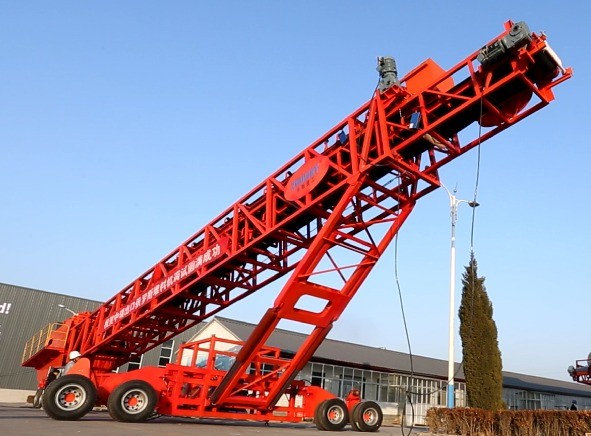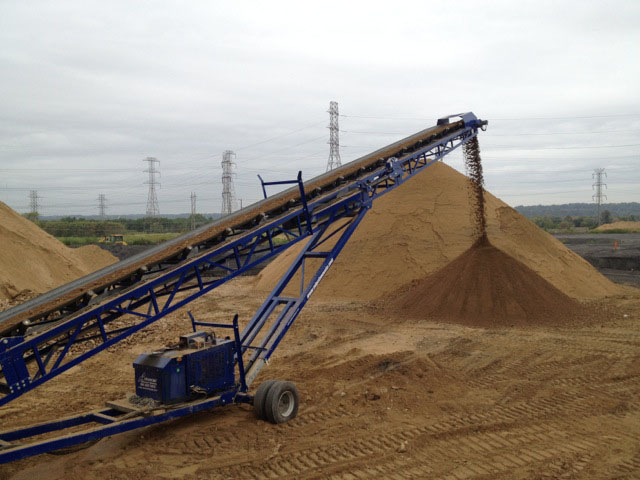1. Determine Your Requirements:
Application: Define the primary tasks you'll be using the telescopic stacker for, such as loading/unloading, stacking, or reaching heights. Different models are designed for specific applications.
Load Capacity: Calculate the maximum weight you'll need to lift. Choose a stacker with a load capacity that comfortably accommodates your heaviest loads. Lift Height: Consider the maximum height you need to reach. Make sure the stacker's lift height meets your requirements.
2. Type of Telescopic Stacker:
Rough Terrain: These stackers are designed for outdoor use on uneven surfaces. They feature sturdy tires and powerful engines for off-road capabilities.
Industrial: Suitable for indoor applications with smooth surfaces. They are often electric-powered and have compact dimensions for maneuverability.
Fixed Radial Telescopic Stacking Conveyor
3. Fuel Type:
Diesel: Diesel-powered stackers are known for their high torque and fuel efficiency. They are commonly used in outdoor applications.
Electric: Electric stackers are ideal for indoor use due to their low noise level and zero emissions. They require charging infrastructure.
4. Reach and Extension:
Boom Extension: Evaluate the reach of the boom when fully extended. Make sure it can reach the necessary heights for your tasks.
Horizontal Reach: Consider the stacker's ability to reach horizontally. This is crucial for reaching loads across obstacles.
5. Attachments and Accessories:
Forks: Standard forks are used for lifting pallets. Other attachments like buckets, clamps, and jibs can expand the stacker's versatility.6. Load Management:
Load Sensing: Some stackers come with load-sensing technology that adjusts the lifting capacity based on the load weight, enhancing safety.
7. Safety Features:
Stability: Look for stability-enhancing features such as outriggers, counterweights, and stability control systems.
Operator Cab: Ensure the operator cab provides excellent visibility, ergonomic controls, and safety measures.
8. Maintenance and Service:
Manufacturer Support: Choose a brand with a reputation for quality and excellent after-sales support.
Ease of Maintenance: Opt for stackers with easy access to maintenance points and user-friendly diagnostic systems.
9. Budget Considerations:
Total Cost of Ownership: Consider not only the initial purchase price but also maintenance, operating costs, and potential resale value.10. Local Regulations:
Licensing Requirements: Check if operators need specific licenses to operate telescopic stackers in your region.11. Test and Demo:
Hands-On Experience: Whenever possible, request a test or demo of the telescopic stacker to assess its performance and suitability for your tasks.12. Expert Consultation:
Industry Experts: Consult with experts or professionals in the material handling industry for guidance on choosing the right stacker for your needs.Conclusion:
Purchasing a telescopic stacker is a significant investment that requires careful consideration of your operational requirements, applications, and budget. By evaluating factors such as load capacity, lift height, attachments, safety features, and maintenance, you can select a telescopic stacker that optimizes efficiency, safety, and productivity for your business. Conduct thorough research, consult with experts, and prioritize long-term value when making your decision.

 ZOOMRY
ZOOMRY



